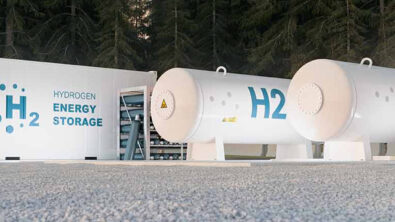Turning brown into green – achieving industrial machinery excellence through digitalization

Key trends drive the need for a sustainable business strategy in the industrial machinery industry. When optimizing the design process in a factory or company, digitalization tools focus on the suppliers, the cost of parts from the supplier, the part’s carbon footprint, and the carbon footprint of delivering a part to a factory or location.

In a recent podcast, Eryn Devola, Head of Sustainability at Siemens Digital Industries Software, and Rahul Garg, VP of Industrial Machinery and SMB Business Program at Siemens Digital Industries Software, discuss how to turn brown into green in the industrial machinery sector.
Everything must be evaluated early in the process by having access to digitalization tools, making it easier to combine analysis. In turn, this makes it possible to plan the product’s design and the machinery that will manufacture it in the realization phase. This is when you make decisions about an equipment’s energy efficiency and a product’s longevity. This information allows for making good decisions up front in the process; however, brownfield designs still need to turn green, making them more environmentally friendly.

Four issues drive sustainability:
- Compliance with regulatory and governmental bodies.
- An objective to make factories smarter, more sustainable.
- The obligation to manage better. The resources we have at our disposal in this world and even some of the challenges we are creating with the way we use our resources are essential challenges and issues.
- To address the customer demand for equipment providers and equipment to be more sustainable.
Digitalization drives sustainability; it’s the how to the what. So, sustainability is an outcome that requires much planning and many tools to make it happen. Digitalization provides the opportunity to look at the entire product lifecycle, taking data from various phases and visualizing what provides the ability to try many things as you run through simulation tools.
Simulation allows for various scenarios within digitalization, letting people exchange data without achieving that one entity – looking outside your gate. By viewing everyone in the value chain and ecosystem, you can see success with sustainability coming from people working together, exchanging data, sharing information, and defending standards, even across competitors, to move the entire area forward. So, there are a couple of ways that digitalization helps drive sustainability.
Digitalization helps a company become a digital enterprise by being more adaptable, agile, and flexible, improving the ability to deliver their product at the right time, quality, and cost. This process means leveraging digitalization for energy efficiency, decarbonization circularity, and resource efficiency. It brings it all together in a very comprehensive way for many customers.
It’s an evolution, starting with essential or first-level outcomes, and these various dimensions make designing and producing equipment significantly more difficult. But the good news is that digitalization provides tools to make it palatable and executable. So, as it becomes even more complex with various outcomes, it also offers digital tools and enablement to make it manageable moving forward. So, although it will get harder to manage build in that complex environment, digitalization provides the tools to make the job easier.
It also provides a view of the entire value chain where all the entities in that chain work together to move forward, finding those pain points more universally. It is holistically working together to attack them.
This is the beauty of having a safe, secure exchange of data that allows people to visualize it across an entity, the entire lifecycle of a product, production line or production facility. It has substantial data implications for the industry and how those must feed both traditional and sustainability outcomes.
Learn more in the podcast.
Siemens Digital Industries Software helps organizations of all sizes digitally transform using software, hardware and services from the Siemens Xcelerator business platform. Siemens’ software and the comprehensive digital twin enable companies to optimize their design, engineering and manufacturing processes to turn today’s ideas into the sustainable products of the future. From chips to entire systems, from product to process, across all industries. Siemens Digital Industries Software – Accelerating transformation.


